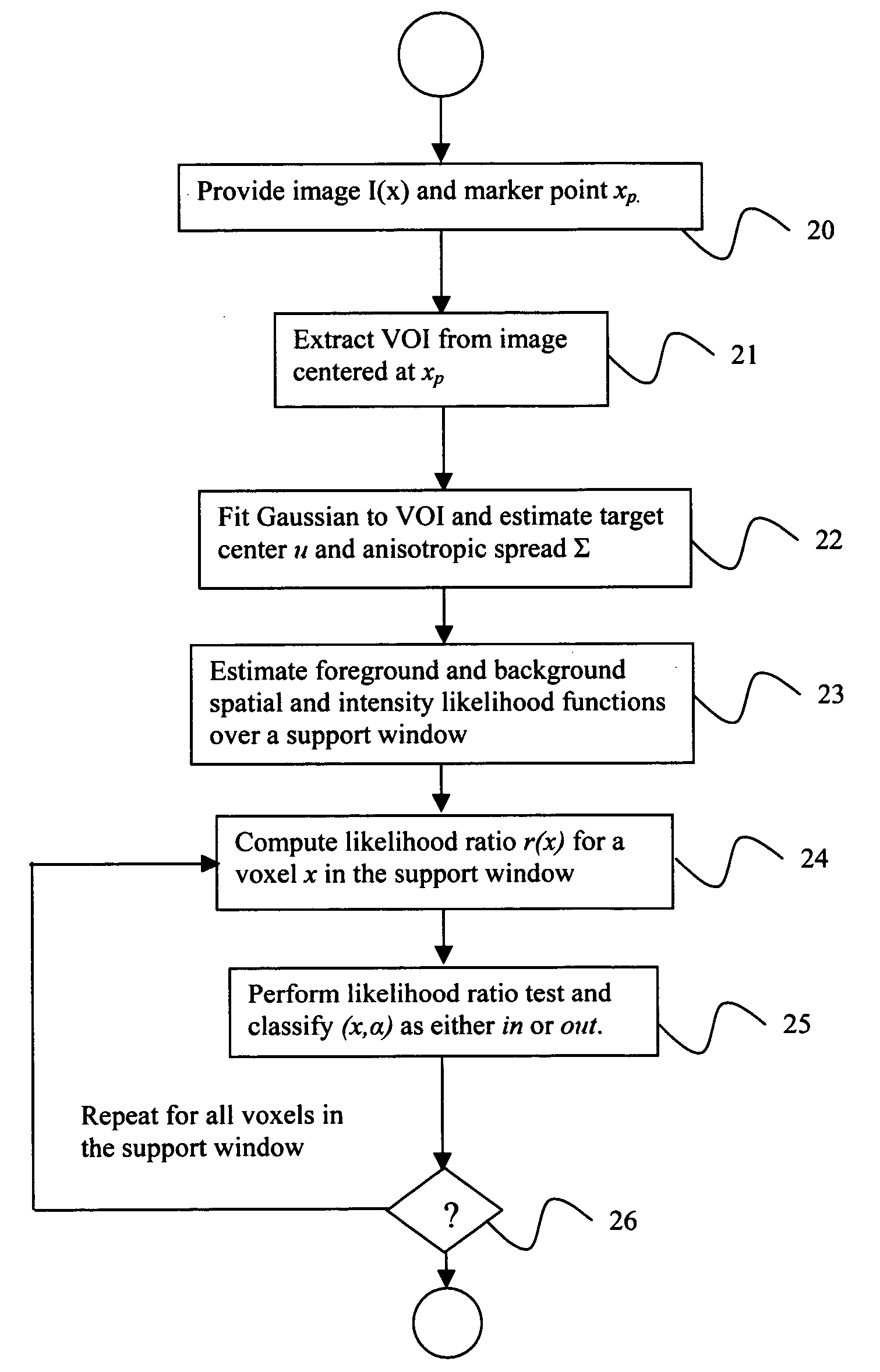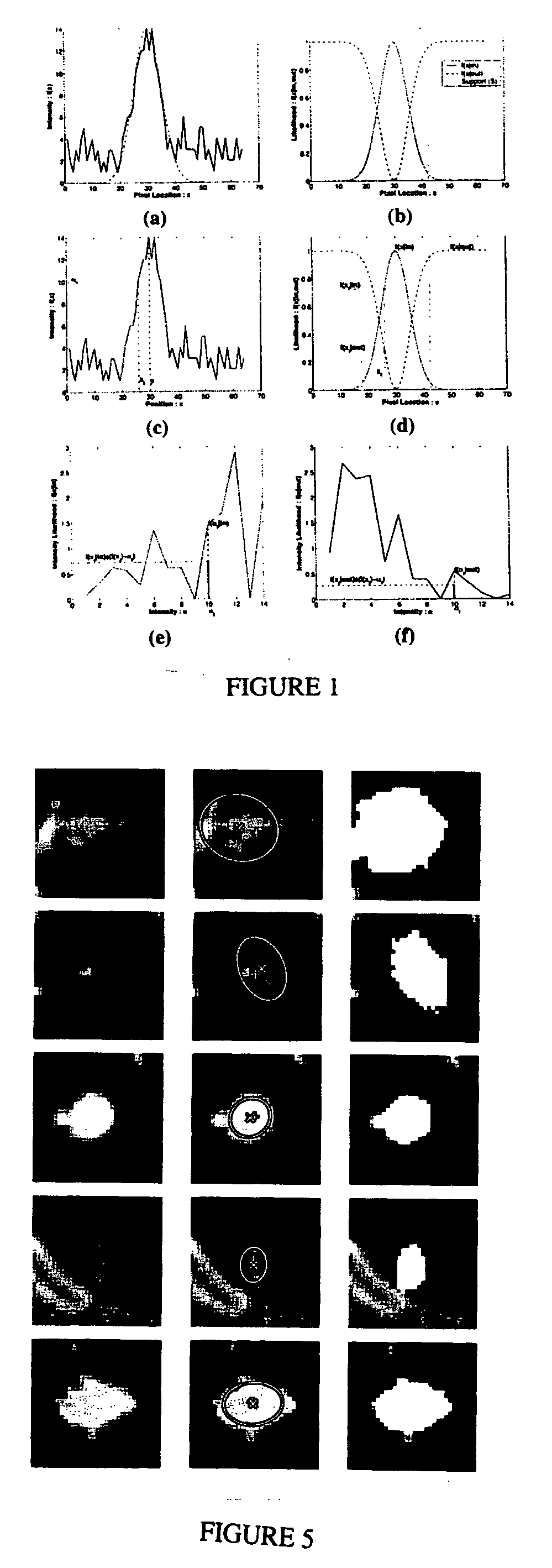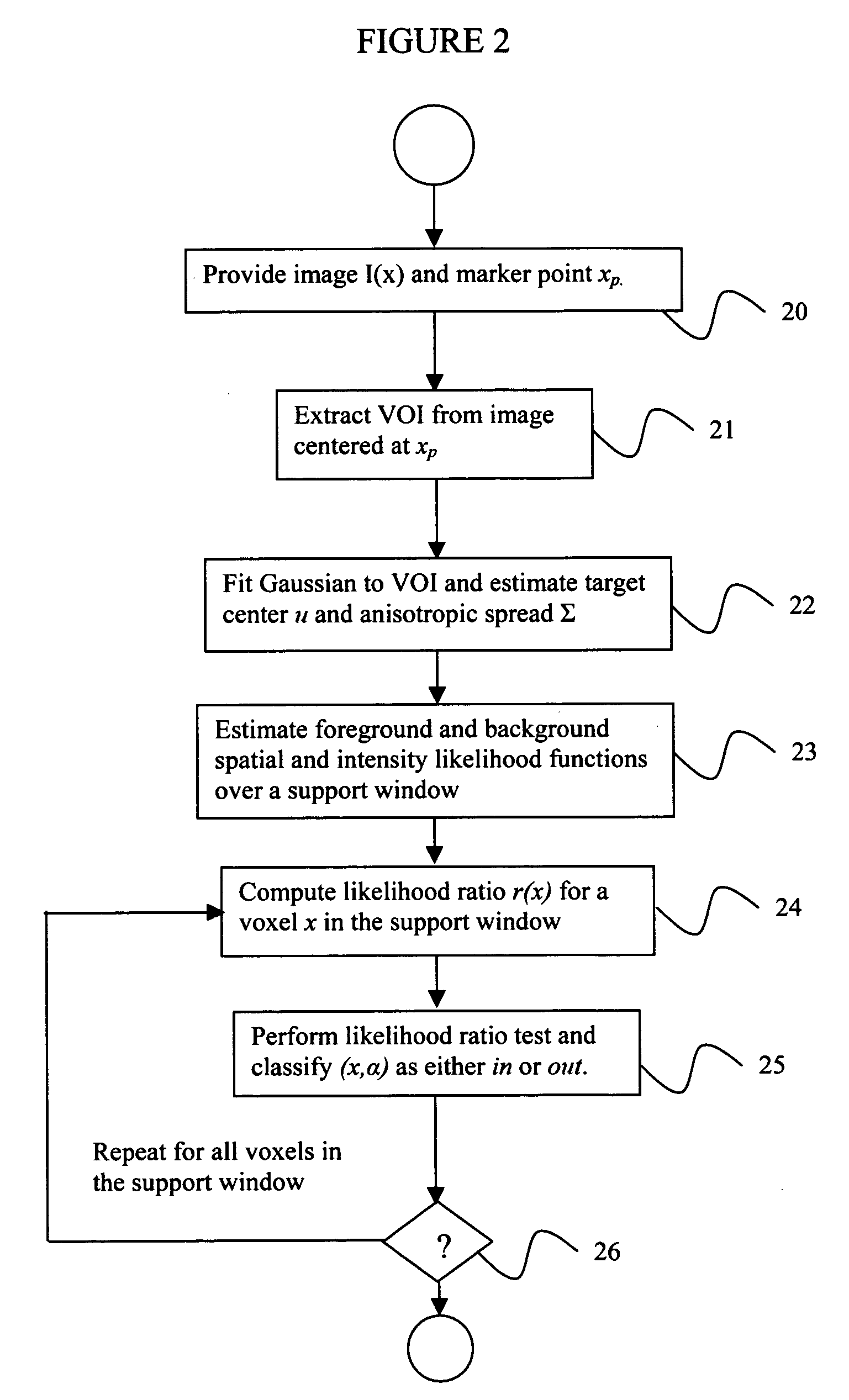System and method for volumetric tumor segmentation using joint space-intensity likelihood ratio test
a volumetric tumor and likelihood ratio technology, applied in the field of object segmentation in digitized medical images, can solve problems such as difficult image segmentation
- Summary
- Abstract
- Description
- Claims
- Application Information
AI Technical Summary
Benefits of technology
Problems solved by technology
Method used
Image
Examples
Embodiment Construction
[0029] Exemplary embodiments of the invention as described herein generally include systems and methods for an efficient segmentation solution for a class of blob-like structures captured in multi-dimensional medical images. Although an exemplary embodiment of this invention is discussed in the context of segmenting a CT lung nodule, it is to be understood that the object segmentation and shape characterization methods presented herein have application to other multi-dimensional imaging modalities.
[0030] As used herein, the term “image” refers to multi-dimensional data composed of discrete image elements (e.g., pixels for 2-D images and voxels for 3-D images). The image may be, for example, a medical image of a subject collected by computer tomography, magnetic resonance imaging, ultrasound, or any other medical imaging system known to one of skill in the art. The image may also be provided from non-medical contexts, such as, for example, remote sensing systems, electron microscopy...
PUM
 Login to View More
Login to View More Abstract
Description
Claims
Application Information
 Login to View More
Login to View More - R&D
- Intellectual Property
- Life Sciences
- Materials
- Tech Scout
- Unparalleled Data Quality
- Higher Quality Content
- 60% Fewer Hallucinations
Browse by: Latest US Patents, China's latest patents, Technical Efficacy Thesaurus, Application Domain, Technology Topic, Popular Technical Reports.
© 2025 PatSnap. All rights reserved.Legal|Privacy policy|Modern Slavery Act Transparency Statement|Sitemap|About US| Contact US: help@patsnap.com



